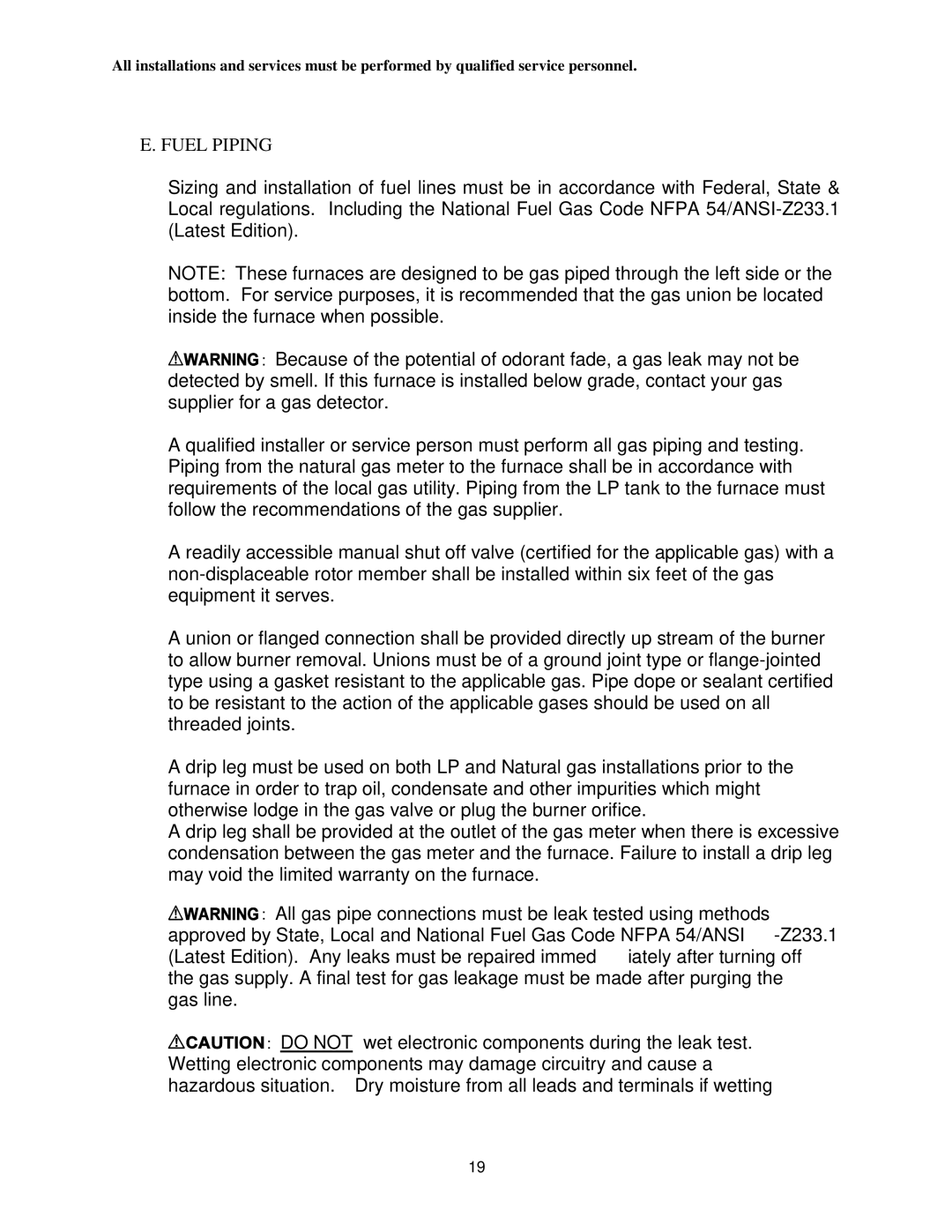CMC1-75DV3N, CMA3-75D36N, CMA3-50D36N, CMC1-75D36N, CMC1-50D36N specifications
Thermo Products offers a versatile range of heating solutions that cater to various industrial and commercial applications. Among their popular models are the CMC1-75DV3N, CMC1-50DV3N, CMA3-50D36N, CMC1-50D36N, and CMC1-75D36N. Each model is engineered to deliver efficient performance and durability, making them ideal for meeting diverse heating needs.The CMC1-75DV3N is tailored for high-capacity heating requirements, featuring advanced heating technology that ensures rapid and consistent heating. Its robust design includes high-efficiency burners, and the unit is built with durable materials for extended lifespan. This model is equipped with integrated safety mechanisms that prevent overheating and ensure reliable operation.
In contrast, the CMC1-50DV3N is designed for medium-sized applications, prioritizing both efficiency and cost-effectiveness. It includes automated controls to optimize energy usage while maintaining consistent temperature outputs. Its compact footprint makes it suitable for installations with space constraints, without compromising on heating performance.
The CMA3-50D36N model introduces enhanced energy management features, offering dynamic heating solutions. This model leverages advanced thermal technologies that aim to reduce energy consumption while maximizing heating output. Its versatile installation options allow users to adapt the unit to their specific space requirements seamlessly.
The CMC1-50D36N and CMC1-75D36N models are recognized for their adaptability across various applications. The CMC1-50D36N specifically caters to smaller heating needs, while the CMC1-75D36N serves larger spaces. Both units come equipped with user-friendly interfaces that simplify operation and adjustments, allowing for precise temperature control.
All models feature high-quality insulation and construction, helping to minimize heat loss and enhance system efficiency. They are designed with maintenance in mind, ensuring easier access to key components for service and repairs.
Through the incorporation of customizable settings, these models can suit the unique requirements of different environments, whether it be industrial facilities, commercial spaces, or residential buildings. With Thermo Products' commitment to innovation and quality, these heating solutions exemplify reliability, making them a solid choice for anyone in need of efficient heating technology.

